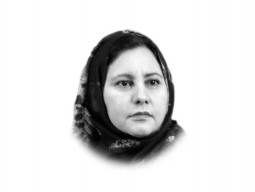
Recent work has been done on the potential impact of such an ‘unthinkable’ nuclear conflict in the Indian subcontinent, the findings of which are published in the leading academic science journal, Science Advances, this past month, which make for sobering reading. Titled ‘Rapidly expanding nuclear arsenals in Pakistan and India portend regional and global catastrophe’, this research article notes that the chances of an actual nuclear war between India and Pakistan are considerably higher than they are between other nuclear states. This increased risk is due to a long history of military clashes, the lack of progress in resolving territorial issues (especially Kashmir), and the ongoing rapid expansion of nuclear arsenals on both sides.
A crisis simulation exercise conducted in Sri Lanka organised by the US Naval Postgraduate School some years ago, involving retired senior military officials and security analysts from India and Pakistan, considered the regional escalation dynamics during a potential period of crisis. While not a substitute for real-world outcomes, this predictive exercise had also concluded that a conventional limited war in South Asia would quickly escalate into a full-fledged war, with a high probability of it becoming a nuclear conflict.
The Science Advances study chose a plausible scenario of a nuclear conflict (following advice from regional military and policy experts) whereby India could use 100 strategic weapons and Pakistan responding with 150 weapons in a conflict lasting about a week. Such a conflict would have an estimated fatalities rate of between 50 million to 125 million people. Because large numbers of weapons that can be used by both sides, these net results are estimated to be similar no matter how the war started.
Besides the carnage caused within India and Pakistan in such a horrible scenario, the nuclear-ignited fires in both countries would release immense amounts of carbon, which would rise into the upper troposphere, and spread globally within weeks. Surface sunlight would decline, and rainfall patterns would be significantly altered worldwide, causing major environmental impacts, triggering worldwide collateral fatalities, and mass starvation. Recovery from such devastation would probably take more than ten years.
While India took the lead in announcing it was a nuclear power, it officially espouses a policy of ‘no first-use’ (of nuclear weapons). On the other hand, Pakistan maintains its option to use nuclear weapons first, but only if it cannot stop an invasion by conventional means. Yet, the development of smaller tactical weapons by Pakistan to retaliate to conventional use of force by India, and with India now apparently following suit, increases the chances of resorting to the nuclear option.
Presently, both India and Pakistan remain locked in a nuclear race, which is far beyond their deterrence needs. India’s nuclear equation aims to achieve deterrence with China, which in turn compels Pakistan to keep up.
Tensions between India and Pakistan are once again at an alarmingly high level, and the possibility of another conflict erupting and escalating into a war and then a nuclear conflict thus remain a major concern. Resolving the underlying causes of the protracted conflict between India and Pakistan is not easy. However, given the nightmarish cost of a nuclear conflict between these two states, there is urgent need to bolster the strategic restraint regime and take incremental confidence building measures to help prevent the risk of triggering an accidental conflict, and to help halt the escalating regional arms race between these poor countries.
Published in The Express Tribune, November 1st, 2019.
Like Opinion & Editorial on Facebook, follow @ETOpEd on Twitter to receive all updates on all our daily pieces.















COMMENTS
Comments are moderated and generally will be posted if they are on-topic and not abusive.
For more information, please see our Comments FAQ